Last Updated on February 1, 2023
Did you find site addresses in SharePoint a little confusing?
It’s actually normal if you’re new to SharePoint Online. The more you visit sites and pages, the more you understand how the URLs work.
In this article, let’s talk about SharePoint addresses and URLs including the format, limits, renaming or even changing a site address, and more.
Let’s get started.
Table of Contents:
This is easier to understand if you navigate first to your SharePoint tenant and you will land at the default site collection.
Check the URL and you will see that the format looks like this:
https://tenantname.sharepoint.com
Here are some notes about the site address of the default site collection:
- All SharePoint Online sites, documents, and places in your tenant start with this link
- The default site collection site address is permanent
- You can’t change the site address (normally)
There’s now a feature that enables one to change the default site collection (the domain name) — though it’s still in public preview.
For other site collections (or sites) that you created in the tenant, you will see a /sites suffix before the site name:
https://tenantname.sharepoint.com/sites/nameofsite
For pages, you will see a /sitepages and then the name of the page right after the site address:
https://tenantname.sharepoint.com/sites/nameofsite/nameofpage.aspx
How about subsites?
Well, SharePoint simply puts a slash after the “main” site name and then the name of the subsite:
https://tenantname.sharepoint.com/sites/nameofsite/nameofsubsite
The same principle works when dealing with a document library — it simply puts a slash before the name of the document library:
https://tenantname.sharepoint.com/sites/nameofsite/nameoflibrary/forms/allitems.aspx
The extension simply refers to the default view of the library that shows all the items inside the library.
For lists, there is a /lists suffix before the name of the list followed by the usual extension that means showing all items in the list:
https://tenantname.sharepoint.com/sites/nameofsite/lists/nameoflist/allitems.aspx
In terms of SharePoint URLs, these are the most important ones that you need to know. There are others — but knowing them doesn’t help in any way.
Note: If you want a full list of all useful Microsoft 365 links that you will use, feel free to book this article here where I listed all of them.
Sign up for exclusive updates, tips, and strategies
Can you have a site address or URL that can be as long as you want it to be?
Well, SharePoint Online does have its own share of limitations — including one related to character URL length.
Basically, you can’t have more than 400 characters in the file or folder path (usually in the case after migration).
Or else, you will encounter this error:
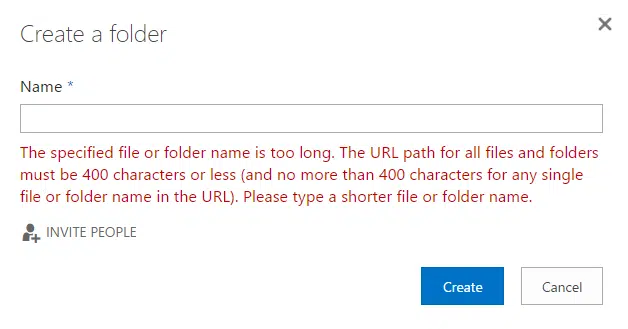
The count starts after the default site address:
https://tenantname.sharepoint.com
This rarely happens though in a normal operation — unless you purposefully create super long site names and document file names.
Note: I wrote this as a caution when uploading files and documents to a SharePoint library. You can read more about it here.
Yes, you can easily rename a SharePoint site URL through the SharePoint admin center active sites page.
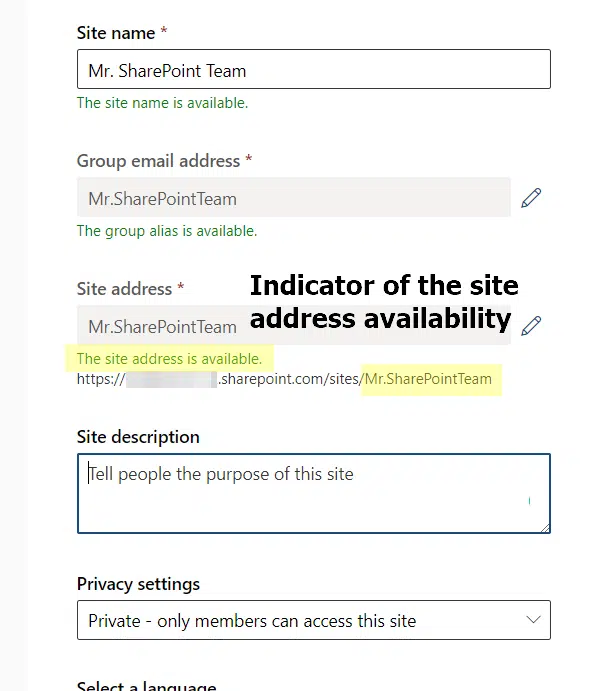
Note: I wrote a more thorough explanation of how to rename a SharePoint site URL and answer some questions regarding the process.
But here’s the summary of everything you have to do:
- Navigate to the SharePoint admin center first
- Go to the active sites page
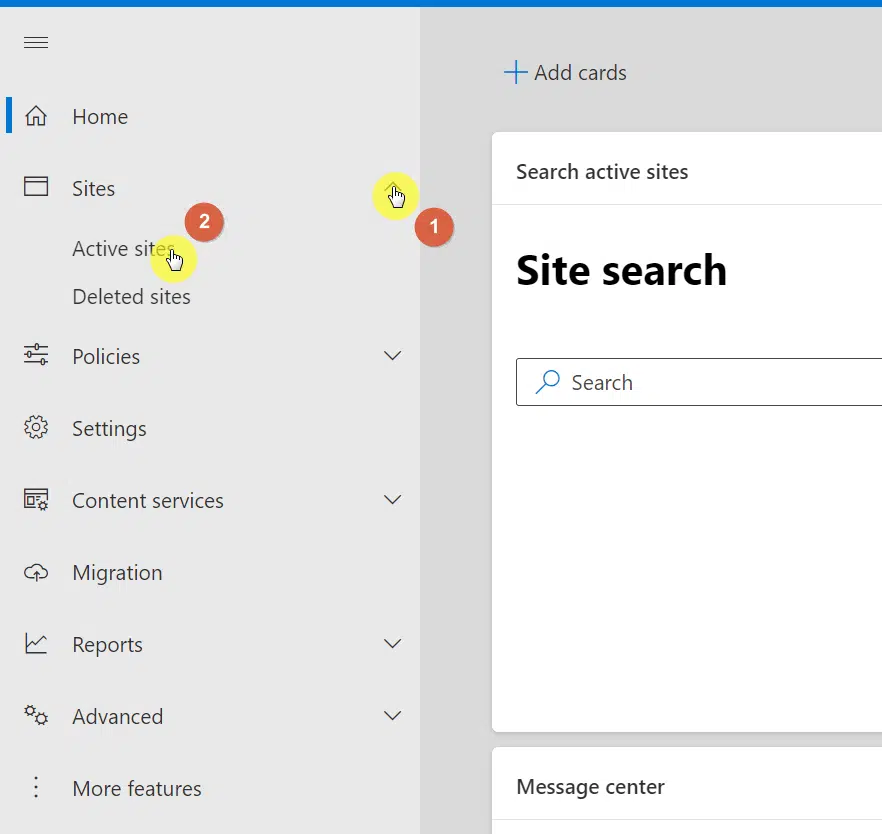
- Find the SharePoint site with the URL you want to change
- See more information about that SharePoint site
- Click the edit link under the general tab on the right panel
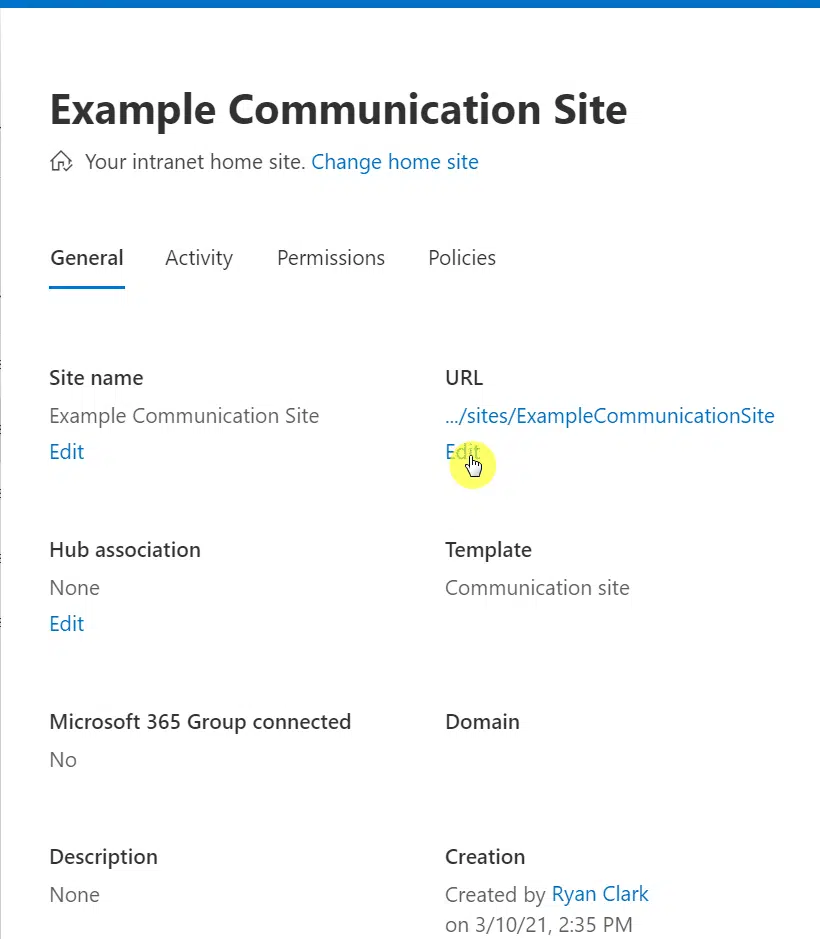
There is also a way to do this via PowerShell too.
Simply enter this code (credits from this source):
Start-SPOSiteRename -Identity https://tenant.sharepoint.com/sites/oldsiteaddress -NewSiteUrl https://tenant.sharepoint.com/sites/newsiteaddressMore or less, this is what you will see:
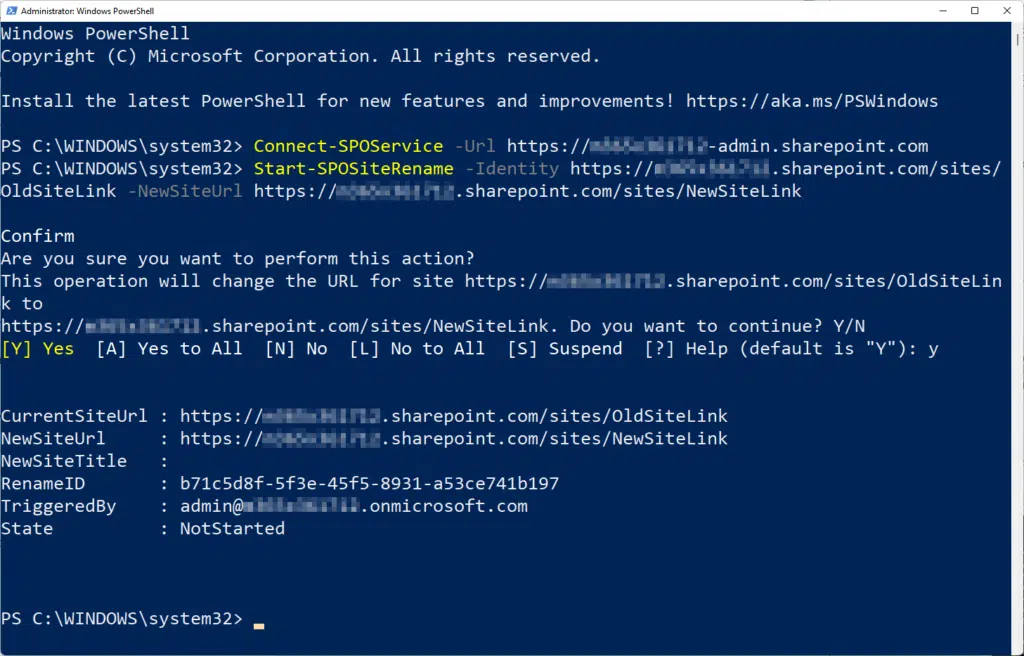
Take note of the following when changing a site address in SharePoint:
- The old site address is still active — you can always reuse it by releasing its redirection to the new site address.
- The email address of a team remains the same and you will need PowerShell to point the email address to the new site address.
- You need to release sites registered as a hub and those that have a compliance or retention policy before you can change their site address.
If you are referring to changing the default site collection address or domain name of your tenant?
Similar to what I wrote earlier, it’s now possible with the recent updates from Microsoft. Take note that this is only in public preview.
Note: If you’re interested in changing your default site collection address or domain name, read this documentation from Microsoft.
Anyway, do you have any questions about SharePoint URL? If so, kindly leave your thoughts in the comment section.
For inquiries and other concerns, kindly use the site’s contact form and I’ll get back to you as soon as possible.


Great article. Tons of useful information. Thank you.